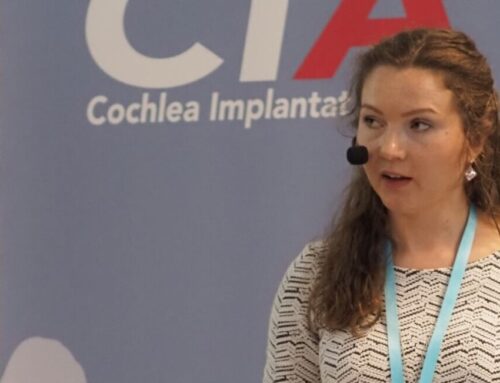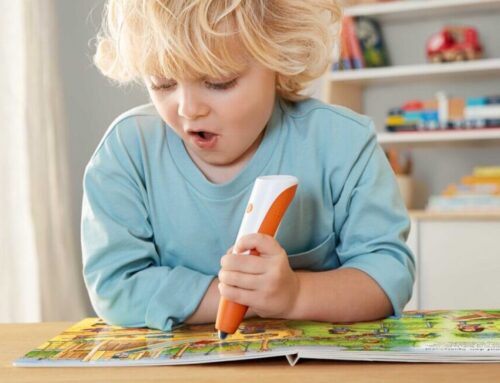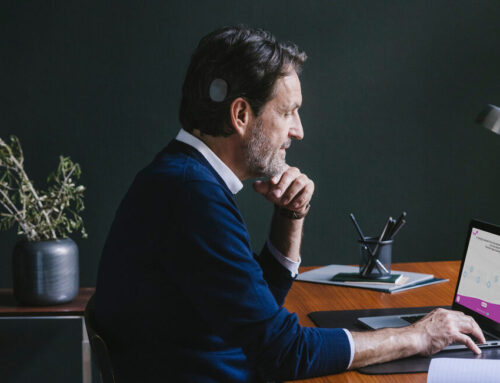Tips on training binaural hearing
To reach maximum benefit with a second cochlear implant, users should pursue regular training, like they did with their first CI. Experts from Germany and Austria explain how to specifically train binaural hearing.

“Sequential cochlear implantation requires specific and consequent training of both ears”, Corinna Schaar, a hearing implant rehabilitation specialist from Germany explains. Sequential cochlear implantation means that a user with one CI receives a second CI on the contralateral (= other) ear. Speech therapist Constanze Vetter from Vienna works with CI users in Austria and emphasizes the importance of training with CI. “I recommend that my clients start their training sessions at home with the new CI first. In daily life, they should use both cochlear implants all day long anyway.”
The longer the time since first implantation, the likelier that users will have forgotten the weeks and months of hearing training after their first surgery. CI candidates sometimes expect that the second side will quickly catch up with the first ear and reach the same performance soon after first fitting. However, some perceive the new signal on the second side as disturbing background noise. “It is essential to wear the audio processor regularly. Patients need to be motivated and willing to comply”, Schaar points out.
Hearing – with both ears and in both ways
First, listening and understanding speech are trained with the second CI alone, later on with both devices combined. If small children are reluctant to take off the first CI, parents sometimes revert to a trick: After their midday nap the “first processor is still tired and needs some more sleep.” This is the time for listening games.
To localize sounds and filter out single sounds and speech sources in noisy surroundings, hearing abilities should be fairly equal on both sides. Such binaural abilities take time to learn, even for children with normal hearing, as do speech and communication. These abilities develop with speech and language. Therefore, it is essential for cochlear implant users to consciously train them.
Hide and Seek for Old and Young
This popular game for adults and teens starts with the standard ringing tone of a Samsung, Apple or Huawei phone: “Whose phone is ringing?” or “Where did I put my phone?”
While adults might show some nervous reactions in situations like this, children usually love these hide and seek games. Hide-a-Sound involves two players: one hides and makes a predefined sound or calls the seeker by their name. Alternatively, you can hide a ringing alarm clock or mobile phone. Children can seek it together. Newly implanted children might need some assistance from an adult player to locate the hiding place.
Blind Man’s Buff is another popular game among children. For hearing training purposes the “blind man” may only be called out or dodged by sounds. Of course, other children’s games can also be adapted. Corinna Schaar laughs: “My favourite game with kids is I hear something that you don’t hear. We not only ask the children which sound they are hearing but where it is coming from.”
Targeted localization
If you are an adult and want to train your directional hearing, it is best to start in familiar surroundings and with a familiar sound whose location you roughly know. Look for the sound source. Close your eyes, turn your head in different directions and find out from which direction you can localize the sound best.
“Sounds can be spoken words, musical instruments or everyday sounds”, Vetter explains. “If localizing a sound is working well, I play two sounds from different positions right after one another. Users should localize them in the correct order.” With progress you can try the exercise in unfamiliar surroundings or with unfamiliar or moving sounds, such as passing cars.
For adults exercises need to be easily integrated into their daily life. Schaar recommends users to close their eyes, alone or with a partner and find out: how many sounds do I perceive, what are they and where are they coming from? In group therapies we can play this game indoors or outdoors, in a park or a café. Localization and sound differentiation can be practized at the same time.
Speech understanding in noise
No matter if you are in a restaurant, open-plan office, a classroom or in public transport: Everyday life requires understanding and communicating in noise. “Speech understanding in noise is the most difficult milestone to reach in the rehab process”, Vetter is convinced. If CI users are unsure with an exercise, she recommends doing them in quiet surroundings first. Her German colleague adds: “As soon as a recipient can identify first words, he or she can try adding soft background noise for exercises.”
While speech tests usually apply standardized white noise, Vetter prefers environmental noise for hearing training. “I like to work with an everyday setting.” At home you can turn on the radio. Experienced users can do a communication lesson in their favourite restaurant. Vetter stresses the fact that even people with normal hearing have to sometimes ask their conversation partner to repeat themselves in such surroundings. “Developing strategies with my clients how to best cope in certain situations is key in my therapeutic sessions.”
“In the beginning, opening the window during an exercise is often enough”, Schaar explains. This is easy to do at any time, whether you train with a conversation partner or a CD. “The best exercise for speech understanding in noise is daily life”, Schaar smiles. “There is no life without noise.”






